Visits, VIPs and Royalty
Life at Wellington in the 1940s and 1950s could be somewhat monotonous, so a change to the routine was always memorable. Often, such occasions were the result of the College’s connections with royalty, or with other VIPs.
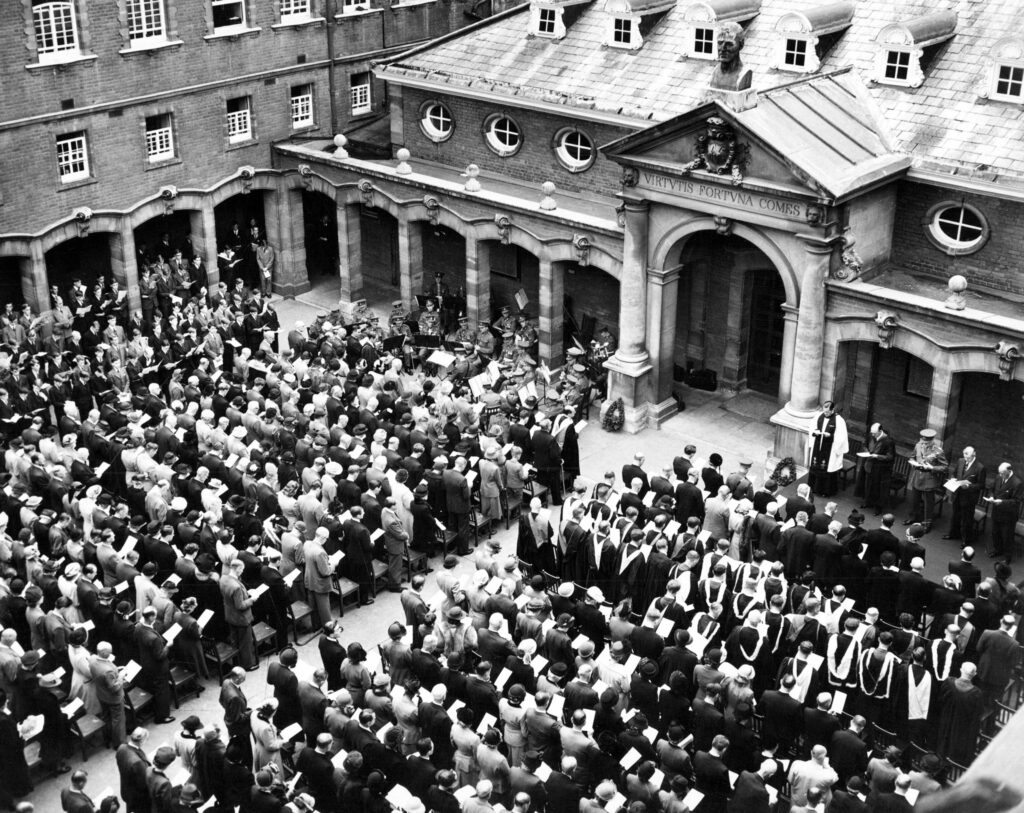
The visit of Field Marshal Montgomery
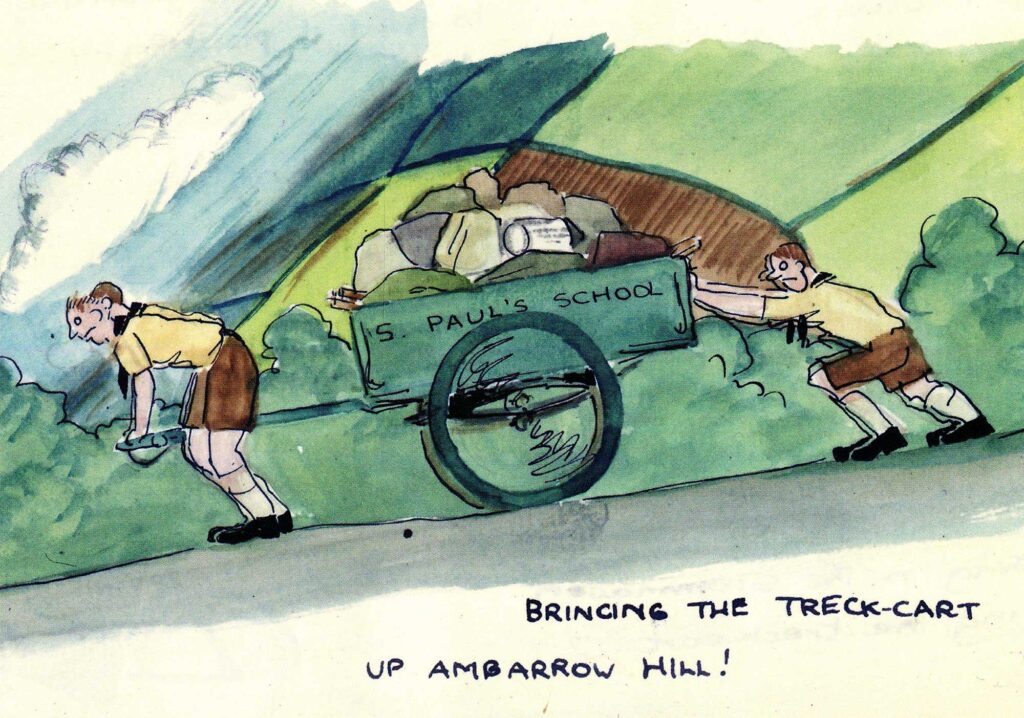
Visiting speakers were not unusual at Wellington – the visit of John Betjeman is mentioned on the ‘Spare Time’ page – but one visitor was mentioned in more detail than any other by our respondents. This was Field Marshal Bernard Montgomery.
That ‘Monty’ should arouse strong interest is not surprising – at the time he was a nationally-known and very popular figure. On the other hand, he was an Old Pauline, and rivalry between Wellington and St Paul’s had only increased when the latter school evacuated to Easthampstead Park during the War, sharing some of Wellington’s facilities. This occasioned ‘Monty’s first visit, described by Peter Bell (Blucher 1943-48) in a letter home in November 1944:
‘There was enormous excitement recently when Montgomery came down to College. He arrived in just about the poshest car I’ve ever seen in my life, a huge Rolls Royce covered all over with Union Jacks and badges etc. He was accompanied by lots of his aides and staff officers. He went into the PT Palace to watch the boxing, St Paul’s (his old school) v the RAC pre-OCTU. I got a wonderful view just opposite him…’
A year or two later, while St Paul’s was still in residence, he made another visit:
‘Shortly after the war, St Paul’s invited Field Marshal Montgomery, an Old Pauline, to give a lecture in our gym. Wellington Prefects were also invited. We were rather resentful. It was OUR gym, not theirs. All I remember of his speech was that he repeated everything three times. We were an arrogant lot!’
Richard Sarson (Hardinge 1943-48)
Christopher Beeton (Talbot 1943-47) also witnessed this event, from outside the gym:
‘The announcement that Field Marshal Bernard Law Montgomery of Alamein was to talk to St Paul’s in the Wellington gym went down like a ton of bricks, and was regarded by us boys as a major insult. Not only did he have a reputation amongst our age group for pomposity, but, even worse, he was a Pauline! Accordingly, our Prefects were determined to make sure he did not feel welcome within Wellington surroundings.
A large group of boys were told to assemble outside the gym while Montogomery was talking to the Paulines inside, and his official car, with a large notice saying ‘PRIORITY’ mounted on its roof, waited on the other side of the road.
Eventually Montgomery emerged from the Gym and, seeing the large group below him, stopped and stood upright in anticipation of acknowledging a large round of applause. Silence Not even a shuffle. Absolute silence.
Clearly angered, Montgomery rapidly descended the steps and strode across the road to his car which was immediately driven away.’
As Christopher continues, this less-than-friendly reception resulted in another visit, in November 1946:
‘Instead of being severely reprimanded for our appalling behaviour, we were told that Montgomery wished to speak to the whole school in Old Hall. It was also made clear that no indication of disrespect would be tolerated. In due course the whole College was assembled, and as Montgomery entered the Hall we all stood as one would expect. Though in fact, none of us was sure quite what to expect.
Montgomery started with a short opening statement. I cannot even remember what he said but, whatever it was, it immediately drew our whole attention. From then on, we were all glued to our seats, spellbound and following every word. At the end we all rose in spontaneous and absolutely genuine applause.
It was clear that we had experienced something almost unique, and been completely won over by an incredible man-manager and really outstanding leader.
Never since have I come across any other senior officer who even approached his calibre in this respect.’
Although this clearly made a lasting impression on Christopher, his contemporary John Ormrod (Stanley 1946-50) remembered the occasion for a different reason:
‘The only visit I remember was when Field Marshal Montgomery came and spoke to the whole school, and asked the Master to give us an extra half day!’
The opening of Great School
A far more regular visitor was Field Marshal Claude Auchinleck, an Old Wellingtonian with outstanding loyalty to his old school. As the highest-ranking OW of the time, he was the natural choice to be guest of honour when the refurbished Great School was opened as a War Memorial and Reading Room in 1949.
‘Bobby’ Baddeley (Picton 1948-52) described this as ‘an historic event, with Field Marshal Auchinleck.’ Others mentioned it too:
‘I remember the opening of Great School, which I thought had been restored with excellent good taste in those austere times.’
Richard Godfrey-Faussett (Anglesey 1946-50)
‘The visit by Field Marshal Auchinleck was an event I do remember. I was honoured to be appointed his runner and spent the whole day with him, an amazing experience.’ John Hoblyn (Hardinge 1945-50)
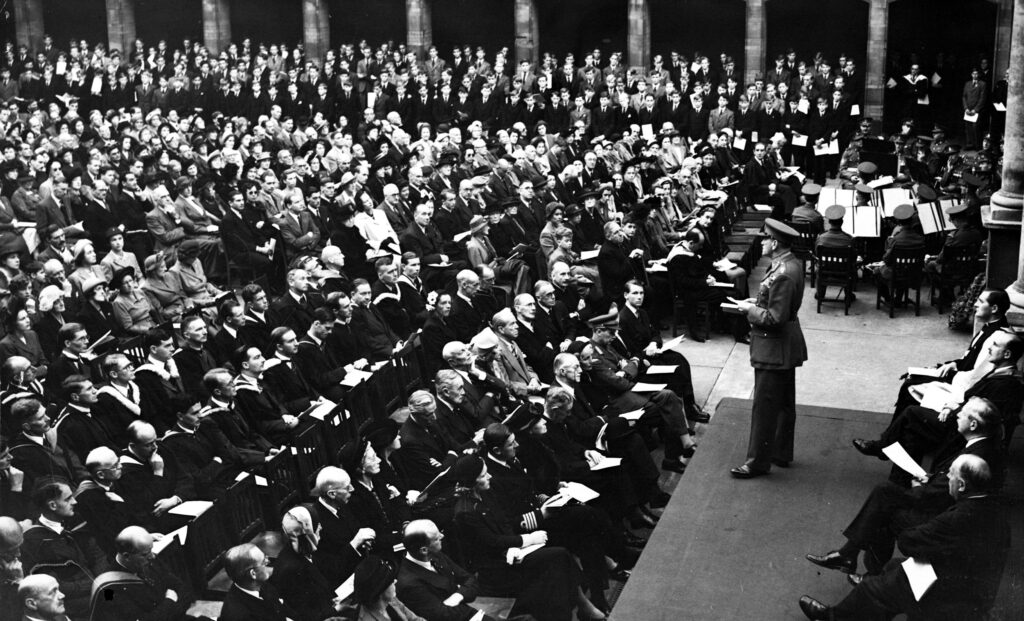
The funeral of King George VI
The death of the king in February 1952 came as a shock and a sadness to Wellingtonians, as described on the ‘World Events’ page. It swiftly led to an event much closer to home: the king’s burial at Windsor, in which members of the Wellington College Combined Cadet Force were invited to take part.
‘A few days later we heard that the Wellington CCF was one of those chosen for the honour of lining part of the route of the funeral procession, in our case the Long Walk up to Windsor Castle. Time was short and almost all schoolwork ceased for a week for those of us in the Corps, whilst we prepared with endless drill practices, lining the Kilometre at College under the supervision of some formidable NCO instructors from Sandhurst. We had to learn that most complicated drill movement “Rest on your Arms Reversed,” only performed at funerals; it involved slowly lowering your .303 rifle so that the muzzle rested on your left boot, with your hand folded on the butt and head lowered.’ Tim Thompson (Lynedoch 1950-54)
‘We were invited, along with Eton, as the two local schools with royal foundation. The invitation was welcomed in the school as a show of respect for a popular and dutiful monarch. The affair involved nearly two weeks of morning drill training on the Kilometre by fierce Guards sergeants from Sandhurst, teaching us how to “Rest on your Arms Reversed” – quite an experience.’ Alan Munro (Talbot 1948-53)
‘We were drilled by the fearsome RSM Brittain of the Coldstream Guards; an imposing figure (to say the least) with a voice that sounded as if it could shatter glass at 50 paces!!’
Jeremy Watkins (Blucher 1951-55)
‘Our instructor on South Front was none other than the famous RSM Brittain of Mons Officer Cadet School, popularly known as The Voice.’ Christopher Stephenson (Hill 1949-54)
‘I recall being drilled hard for two or three days by the famous RSM Brittain…’ Christopher Capron (Benson 1949-54)
‘We had to be drill-perfect, and spent hours in uniform lining the Kilometre at College, being drilled by regular drill NCOs under the supervision of the Army’s two senior RSMs – Jackie Lord from Sandhurst and Tibby Britain from Mons OCS. Since they both thought they were the best, they used to stride up and down beside each other without speaking. A new drill was to learn how to “Rest on your Arms Reversed” as the coffin went past.’ Leslie Bond (Lynedoch 1948-53)
‘The Royal Navy section was trained by Chief Gunnery Instructor Jones from HMS Excellent. RSM Brittain from Sandhurst masterminded the dress rehearsal when we lined the route on the Kilometre. We were dressed as seamen, with Naval greatcoats.’ Tim Reeder (Picton 1949-53)

At last, the great day arrived. The route liners had to be in position for several hours before the procession passed:
‘We were necessarily there for some time and nature called, so our CO, Colonel Roy, ordered us to ground arms, about turn and march into the rhododendrons behind.’ Leslie Bond (Lynedoch 1948-53)
When the cortege actually went past, some of the Wellington contingent managed to obey their orders better than others:
‘The eyes are down for “Rest on your Arms Reversed,” so I have little visual memory of the cortege. I have a vivid memory of the sounds – the crunch of 150 sailors’ boots drawing the gun carriage, the remorseless grind of the gun carriage wheels, the haunting sound of “Over the sea to Skye” as a slow march.’ Tim Reeder (Picton 1949-53)
‘Our view of that most impressive procession was rather restricted with bowed head; as the gun carriage approached, drawn by a contingent of the Royal Navy, we presented arms and the coffin passed, followed by a closed carriage bearing the Queen with her mother and sister, totally in black and heavily veiled. Then back to Arms Reversed while male members of the royal family and many foreign dignitaries processed past on their way to St George’s Chapel.’ Tim Thompson (Lynedoch 1950-54)
‘Despite being ordered to keep our heads bowed, I managed to peep at the world’s royalty and other VIPs marching past.’
Christopher Capron (Benson 1949-54)
‘We were enjoined not to raise our heads as the sombre cortege passed us, but I could not resist a peek, and found myself facing the stern gaze of the Duke of Windsor, on his only visit to England since his abdication in 1936.’ Alan Munro (Talbot 1948-53)
But all felt that it was an honour to take part:
‘I must say I recall feeling rather proud and privileged to be involved, albeit in a very minor way, in what was, after all, an important state occasion.’ Jeremy Watkins (Blucher 1951-55)
‘What a very memorable day for the fifteen-year-old Thompson and his colleagues!’
Tim Thompson (Lynedoch 1950-54)
The visit of Her Majesty the Queen Mother
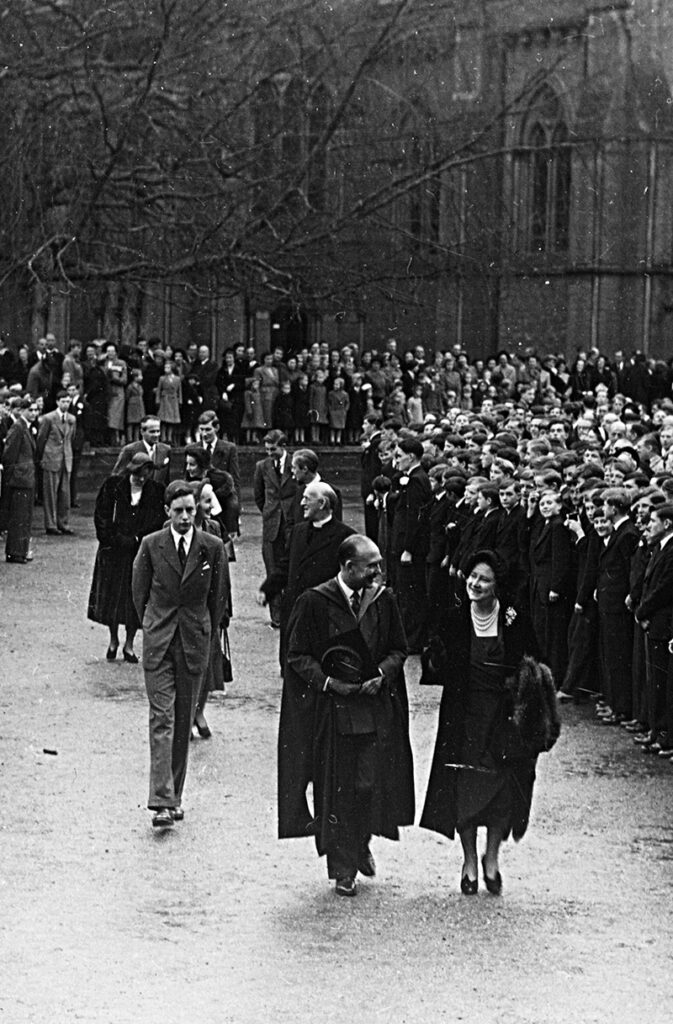
In November the same year, the King’s widow, Queen Elizabeth the Queen Mother, paid a visit to Wellington, an event remembered by many:
‘We also had one visit from the Queen Mother, whom everybody liked, as everybody at Wellington was very pro-royal in those days.’ Anonymous
‘I remember one royal visit, the Queen Mum. I “willed” her to stop and chat to me, and she DID! I felt like curtseying!’
Robin Lake (Benson 1952-57)
The official purpose of the visit was the dedication of the new Hugh Easton windows in the Chapel Apse, replacing those damaged and removed during the War. However, Wellingtonians attributed a variety of other reasons to the occasion:
‘Queen Elizabeth the Queen Mother attended College Chapel to thank us for our part in her husband’s funeral. She sat in the Master’s stall and watched each of us as we left the service: amazing blue eyes.’
Tim Reeder (Picton 1949-53)
‘One of my last memories of my time at Wellington was when the Queen Mother visited us in November 1952, marking the centenary of the death of the Duke of Wellington in 1852. How proud I was to be at the “top of the tree” with my close friend John Previte to welcome Her Majesty.’ Bryan Stevens (Blucher 1948-52)
‘We all received instructions on how to address the Queen Mother, should she speak to any of us. In retrospect, this was probably a recce to see if Wellington was suitable for Prince Charles. It presumably wasn’t!’ William Field (Lynedoch 1952-56)
According to the report in the Wellingtonian, ‘Finally, the Queen Mother drove slowly down the Rhododendron Drive, whose sides were packed with boys of Wellington College…’ However, David Nalder (Orange 1949-53) described this memorable sight as:
‘the Queen Mother bowling along Rhododendron Drive in her Daimler after a visit.’

The Coronation
The death of the king was, of course, followed a year later by the coronation of his daughter as Queen Elizabeth II. For most Wellingtonians, this meant a welcome extra holiday in which to enjoy the national celebrations.
Some were lucky enough to see the events in person:
‘The Coronation allowed us a 4-day holiday. Luckily, my mother had won a draw for two seats on a stand in Parliament Square, which my parents gave to my sister and me. We all drove up in the very early morning to London, which in those days was a long journey, to hear on the car radio that we had climbed Everest. A real boost for the start of the reign.’ Anonymous
‘The school celebrated with a boisterous performance of the Coronation anthems, and a holiday. I was lucky enough to watch the Coronation procession from a stand in the Mall, a damp experience but a glittering spectacle. My brother and I spent the night in London to see a fireworks display over the Thames.’
Alan Munro (Talbot 1948-53)
‘I witnessed the Coronation among the crowd before the Quadriga at Hyde Park Corner. When I saw our young Queen in her carriage, I fell passionately in love with her. After I enlisted that autumn as a private in the Buffs, we were forbidden to post pinups in our barracks. I was sternly reproved by Corporal Martin when he discovered a photograph of the lovely French actress Anne Vernon in my metal kit-cupboard, which he ordered to be removed at once. When Corporal Martin made a further inspection of my kit-cupboard a few days later, he was taken aback to discover a large coloured photograph of our beautiful young Queen. He looked suspiciously at me, muttering: “You’re bloody cunning, Tolstoy!” Of course, I wasn’t at all – I was just inextricably in love. I don’t believe Her Majesty was ever informed of my devoted passion.’ Nikolai Tolstoy-Miloslavsky (Stanley 1949-53)
‘It happened on a Tuesday, and we were given an exeat from the Friday evening. I went to stay with an uncle, who took me to watch Warwickshire play cricket on the Saturday. My parents came down from Cheshire that evening, father and his bachelor twin brother, another OW, both in black ties as my grandfather had just died. They then decided their attire was inappropriate with the Coronation looming. We travelled on to London where we all watched the Coronation from various vantage points, mine being with my uncle at the Oxford & Cambridge Club in Pall Mall.’ Douglas Miller (Benson 1951-56)
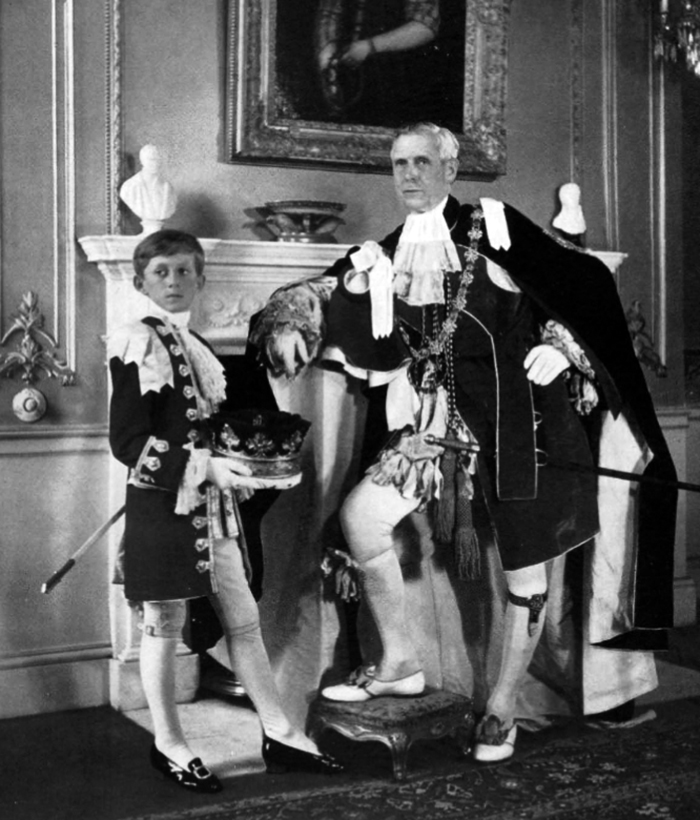
‘I saw the Coronation procession from the roof of the Cavalry Club, which my father had booked – it was a stirring sight, full of colour and many foreign dignitaries. And I saw the Queen! Afterwards my parents had booked the theatre for us to see South Pacific with Mary Martin starring. Quite a day, and at the start of the performance the Queen appeared on the screen, and everyone stood up and cheered.’ Tim Travers (Hopetoun 1952-56)
While a few actually took part, as members of the CCF:
‘In June 1953 I lined the route for the Coronation of Queen Elizabeth II in Parliament Square. Cadets from Dartmouth, Sandhurst and Cranwell covered the Square.’
Tim Reeder (Picton 1949-53)
‘The College CCF was privileged to be based on the Victoria Memorial on the roundabout just outside the Palace, where we had fantastic views of everything. We had to be there by dawn and not allowed to leave until it was all over. We had haversack meals, but there were no “loos,” so the lion statues provided the cover and got their feet very wet and they began to turn green.’ Leslie Bond (Lynedoch 1948-53)
For many, it was an early experience of television:
‘Coronation meant a long weekend at home and almost my first experience of television.’
Christopher Capron (Benson 1949-54)
‘We were at home and watched it on television, together with our village in Somerset, in the local village hall. It was a highly exciting and enjoyable day, and watching on television was still a relatively new experience!’ Anthony Bruce (Benson 1951-56)
‘We were at home for the Coronation and my parents wouldn’t allow me to go up to see it live. Like many at the time, we bought a television.’ Nick Harding (Combermere) 1951-1955
‘We were given several days off over the Coronation. Families of our contemporaries hosted those of us who were unable to go home. I went to stay with Leslie Busk, a contemporary in the Hopetoun, and we watched the Coronation on a large screen television (black and white!) in the local village hall. Home televisions were still relatively rare in those days, and most villages and other local communities laid on something similar.’ Charles Ward (Hopetoun 1951-55)
Charles also recalled another part of the event:
‘I remember lying on Rockies in 1953 watching the rehearsals for the Coronation fly-past, which flew right over College. The RAF was a bit bigger in those days – it took some time to pass. I think there were several mini-rehearsals, involving perhaps just the lead aircraft of various groups: the full fly-past was certainly rehearsed more than once, and was very impressive to watch. Lying on one’s back on Rockies, one got a very good view.’
The band of the Punjab Regiment came over from Pakistan for the Coronation, and, thanks to the efforts of OW Claude Auchinleck, came to perform on South Front the day before the ceremony. They gave an incredible display of precision drumming and after lunch, the bandsmen were shown around College by students. This made the greatest impression on one anonymous OW:
‘The very tall and magnificently dressed men marched up and down in front of the school – a totally unforgettable sight and sound. A very good day.’
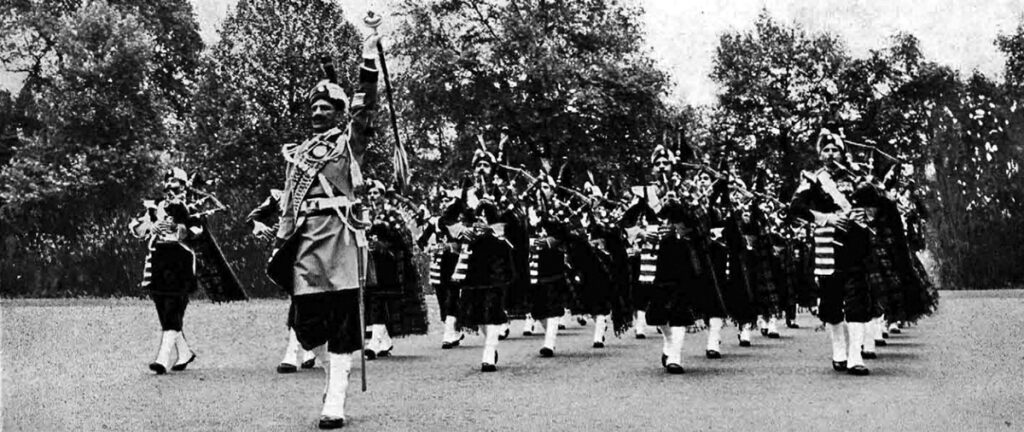
Princess Margaret’s wedding
At the end of the decade, Princess Margaret’s wedding to Antony Armstrong-Jones provided what Richard May-Hill (Hopetoun 1957-61) subsequently referred to as ‘Freedom Day.’
‘Boys were allowed, not only the day off, but to travel unaccompanied on public transport. The Rules at the time forbade travel on public transport even with responsible adults; similarly theatres and cinemas were out of bounds. I have always assumed this was because of the potential effect of infectious and contagious diseases.
We were allowed, no doubt with suitably documented prior arrangements, to leave college. I was fortunate in that a friend’s widowed mother (I never knew but now I suspect he was a Foundationer), invited me to join them for the day. She lived in Liphook, which was a most convenient and easy railway journey from Crowthorne. I recall a very enjoyable break from the daily routine and also some excellent food.’
A visit to Stratfield Saye
Lastly, this most amusing account of a visit, not to Wellington, but by Wellingtonians to the nearby home of the Duke of Wellington, was sent in by Roger Ryall (Picton 1951-56):
‘Every summer, a group of Sixth Form boys, accompanied by one of the younger staff members, was invited by the Duke of Wellington to Stratfield Saye for a guided tour and visit. I was fortunate to be included in the tour of 1956. At that time the incumbent of Stratfield Saye was the 7th Duke of Wellington, Gerald Wellesley, who would have been 71 years old at the time of our visit.
I think we visited on a Saturday afternoon. There would have been about six of us, maybe eight, together with the aforementioned teacher. On arrival at the main entrance, we were greeted with a loud bellow: “Come along in you boys, welcome to Stratfield Saye!” This was the Duke, a robust, peppery individual who was loud and cheery.
My clear memory is of a bust of Napoleon on a marble plinth in the stairwell. Casually tossed onto the bust was the Duke’s trilby hat.
The Duke was accompanied by a smallish man bearing a pained expression. The reason soon became clear, and it was not just because of the hat. “Boys, this is Monsieur Auriol and he is my guest for the weekend,” came the introduction. Monsieur Auriol had been President of France from 1947 to 1954. We replied to this introduction with polite smiles and little bows.
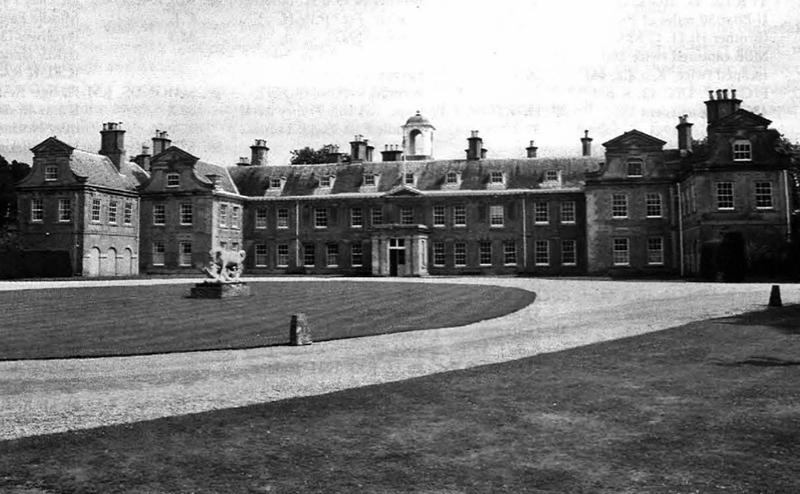
The Duke was in fine form. There were a lot of artefacts to see in the house, since Napoleon’s baggage train had been captured by the Great Duke at Waterloo. The Duke took us round, pointing out all of these treasures with mounting relish. “You see that?” he would exclaim to Monsieur Auriol. “My ancestor captured that from Napoleon!” As the tour went on, poor Monsieur Auriol looked more and more crushed.
It was clear that the Battle of Waterloo was being fought all over again in the corridors of Stratfield Saye.
We Wellingtonians had the grace to feel a little sorry for the suffering Frenchman.
The house contained many glass-fronted cabinets containing the most magnificent china I had ever seen. Unusually, as a schoolboy, I knew a lot about china, due to a family friend who was a great expert and collector. There were cabinets full of the most magnificent Sevres and Meissen dinner services, encrusted in gold and beautifully decorated. Perhaps the most famous of these was the Egyptian Service, the plates of which were decorated with hand-painted Egyptian scenes. There were only two of these sets made: Napoleon had one, the Tsar of Russia the other. It is astonishing that wealth such as this followed great emperors on their travels, even into battle.
Eventually, the tour of the house was completed and we were ushered unceremoniously into the dining room. To our astonishment, there was a long dining table piled high with the most generous tea I had ever seen or have seen since. There were sandwiches, cakes and sponges, but at the centre was a huge silver bowl, piled high with strawberries and surrounded by silver jugs of cream and dishes of sugar. You must understand that in 1956 strawberries were a rare luxury, and very expensive. We had simply never seen so many strawberries. Our astonishment was interrupted by a roar from the Duke: “Come on boys, tuck in. I want all of those strawberries eaten up before you go!” With that, and before we had time to properly thank him, he swept out of the room, followed by the hapless Monsieur Auriol. I have often thought since that, if our tour of Stratfield Saye had happened 104 years earlier, the experience might have been very similar!’